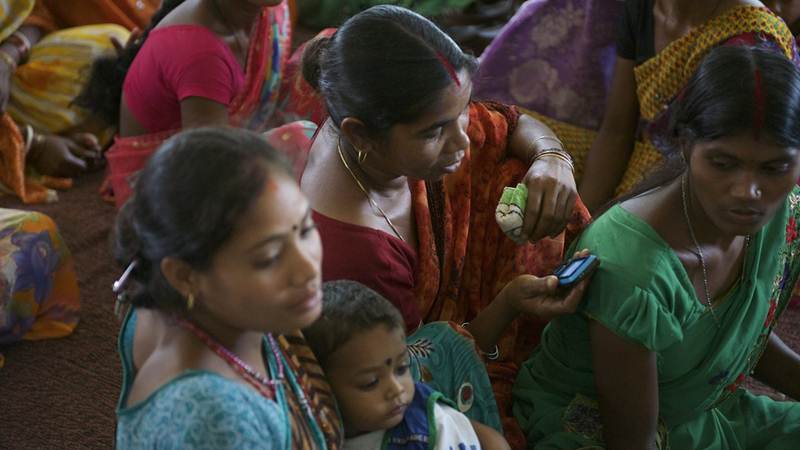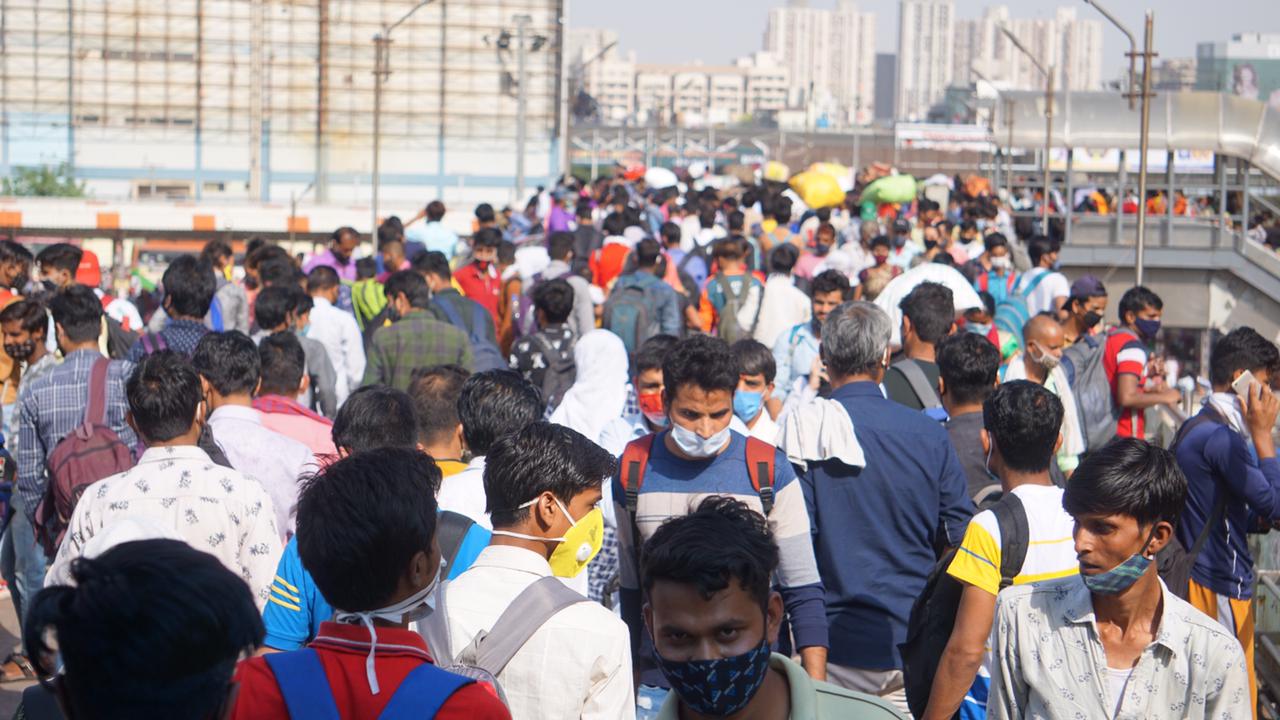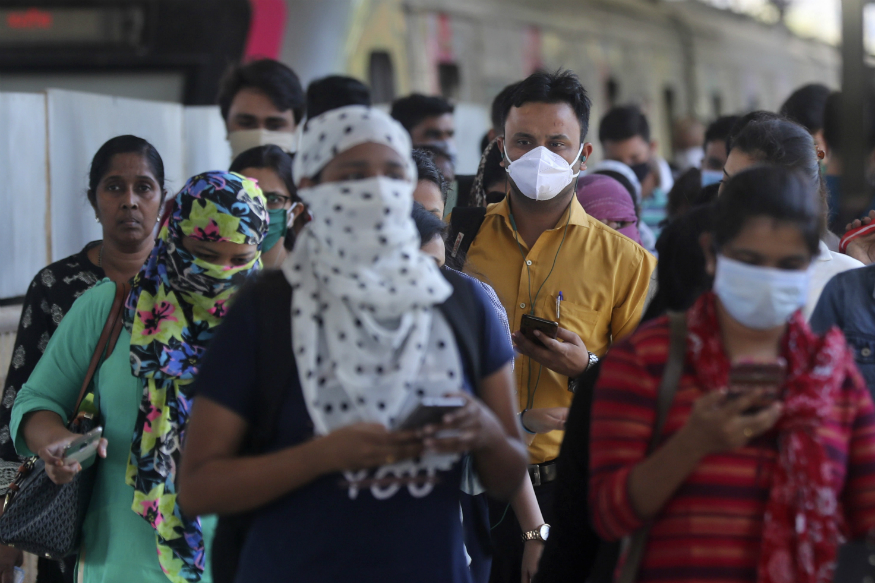COVID19 impact: 15 million salaried workers lose job permanently, women workers suffer worst
Between December 2019 and December 2020, around 230 million people across India dived below the minimum wage threshold, finds a recent report by the Azim Premji University. Several people in rural India have lost their jobs since the lockdown last March.


Women were worst hit by the job losses last year with 47 per cent of the women workers suffering permanent job loss. Photo: Flickr
Over 1,000 kilometres away from his home in Khadakpura village of Bihar, Sheikh Saddam worked as a food and beverage supervisor at the Jaipur Marriott Hotel in Rajasthan. Till last March, before the nationwide lockdown was announced, he used to earn a monthly salary of Rs 13,600.
Announcement of the lockdown was a death knell for his job, forcing him to return to his village in Aurangabad district of Bihar, about 150 kilometres from the state capital Patna. It’s been more than a year now and Saddam is still unemployed. He has a joint family of 11 to feed.
“I liked my job in Jaipur and was hopeful of a successful career in the hospitality sector. But the last lockdown hit my life out of gear,” the 24-year-old told Gaon Connection. “Desperate to find some employment whatsoever, I worked as a construction worker near my village. But having worked at a luxury hotel, I fell sick after two days of rigorous work of loading sand and transferring heavy loads of gravel from one place to another,” Saddam added.

As the second wave of COVID19 rages on and state after state imposes complete lockdown to control the spread of the virus, Saddam has no hope of finding a job.
Also Read: “We were hoping to go back to our jobs… but Corona has again ruined all prospects”
Saddam’s case of losing his job is not an isolated one.
‘15 million people lost their jobs permanently’
As per a recent report released on May 5 by Bengaluru-based Azim Premji University, between December 2019 and December 2020, around 230 million people across the country dived below the minimum wage threshold of Rs 375 per day as fixed by the Anoop Satpathy committee (2017) of the Ministry of Labour and Employment.
The report, titled ‘State of Working India 2021 – One Year of Covid-19‘ also stated that more than 15 million people in the country lost their jobs permanently as COVID19 pandemic ravaged the country’s economy last year. The report is based on the survey conducted by the Centre for Monitoring Indian Economy (CMIE), a private research group.

In Saddam’s home state of Bihar, the influx of salaried migrant workers back to their homes has witnessed people switching their occupations to somehow earn a livelihood.
Also Read: “I travelled from Delhi to Patna, standing for 21 hours. I have another 12 hours to travel”
Akash Kumar, an 18-year-old student waiting for his intermediate examinations told Gaon Connection that a large number of salaried workers who came back from cities like Delhi and Mumbai have set up small shops to support their families. “People set up small carts selling stuff as per the immediate demand. Some are selling bedsheets, others are packaging and selling dry fruits,” said Kumar, a resident of Patna’s Phulwari Sharif area.
“Since Eid is approaching, many have taken up the business of selling seviyan (a vermicelli like sweet delicacy prepared during Eid). Others are selling refreshing drinks and mouth fresheners. But the overall incomes of people have gone down,” he said.
And with the lockdowns and curfews now making a comeback, these odd jobs will also come to an end.
Sudhanshu Mishra, a pharmaceutical student in his 20s told Gaon Connection that in his Vikrampur village in Uttar Pradesh’s Pratapgarh district, people in his family as well as the village population at large have started focusing more on agriculture as compared to before the pandemic.
“The people in the village who worked in cities are mostly living on half their salaries or are working from home. These people have lost their trust on their jobs and are focusing more on farming. The production in the fields has gone up,” he told Gaon Connection.
Women workers suffered worst
The Azim Premji University’s report also highlighted that women were worst hit by the job losses last year with 47 per cent of the women workers suffering permanent job loss. In comparison to their female counterparts, merely 7 per cent of the male workers suffered permanent job losses due to the lockdown.
Meanwhile, a nationwide rural survey conducted by Gaon Connection last summer showed that 93 per cent of rural respondents confirmed reverse migration aggravated the unemployment in their villages (Read complete survey report, The Rural Report 1, here).
The same survey found that eight out of 10 rural respondents did not have any work during the last year’s lockdown. Work ‘completely stopped’ for 44 per cent of the respondents whereas for 34 per cent of the respondents their work was ‘largely affected’. Combining the two, the livelihood of 78 per cent rural respondents was affected to a great degree.
Also Read: Domestic travel bans in cities with high migrant population can increase COVID19 spread: Study

